- Reading Comprehension Worksheets
- Inferences Worksheets
- Context Clues Worksheets
- Theme Worksheets
- Main Idea Worksheets
- Reading Games
- Summary Worksheets
- Online Tests
- Figurative Language Worksheets
- Short Stories with Questions
- Nonfiction Passages
- Genre Worksheets

BECOME A MEMBER!
Noun worksheets, lessons, and tests.
Understanding the parts of speech is fundamental to learning more advanced concepts like sentence structure , grammar, and punctuation. That's why so many language arts units start with the parts of speech. And, if you are starting a unit on the parts of speech, one of the better places to begin is by studying nouns .
Nouns are words that refer to people, places, and things. Most grade school students can tell you this. But the study of nouns gets a little more complex. There are many types of nouns such as common and proper, singular and plural, and abstract and concrete. It is helpful to know these distinctions when studying language. Over the years I've created a catalog of noun worksheets and activities that work well in the classroom. These include multiple-choice tests, practice activities suitable for homework or classroom activities, as well as online noun activities that give students instant feedback and save teachers' time. I've posted all of these activities to this page and made them freely accessible to teachers, parents, and students. May we all one day have a better understanding of what we are saying.
Noun Worksheets
Noun powerpoint lessons.
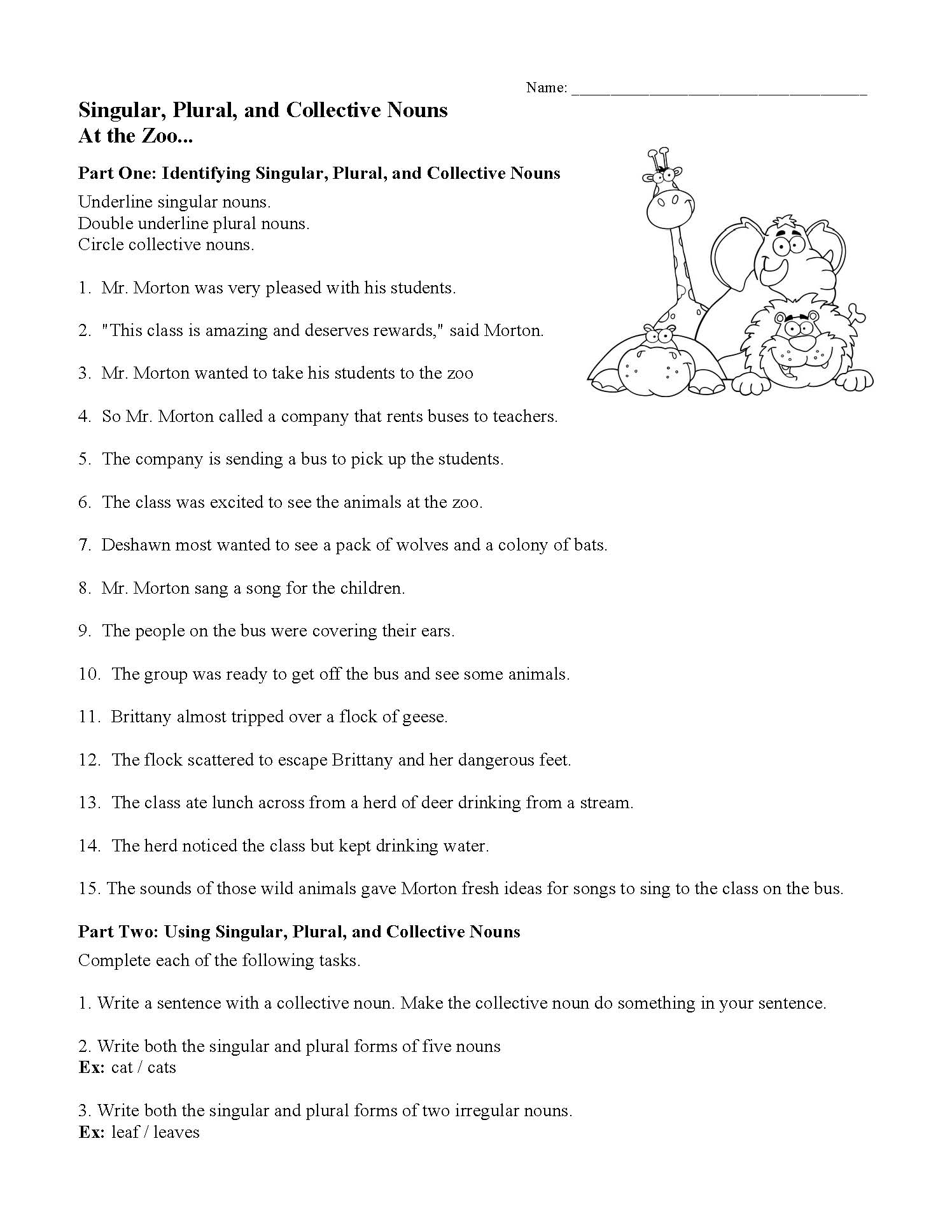

Here are some multiple-choice tests to help evaluate how well your students understand nouns .
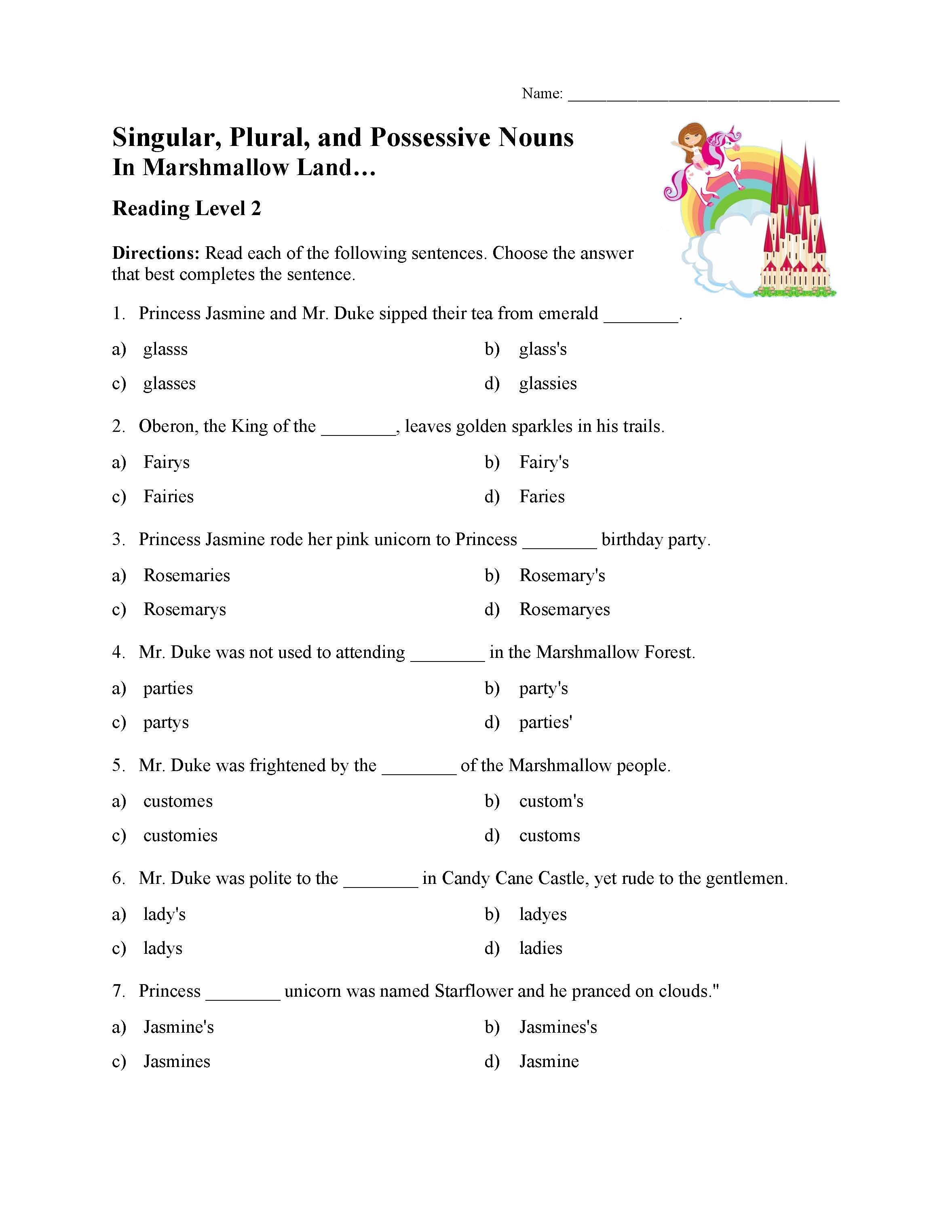
Nouns and Capitalization Common Core State Standards
23 comments, muji n"goya.
I like your site very educative and Professional. I am a homeschool parent, I have found the site very beneficial to my children. 5/5
Karen Livingston
This website is a LIFESAVE right now especially when I have to do both virtual and face to face teaching. Thank you SOO much!
Thank you for all these! Full of powerpoint slides and worksheets. May God bless you and your work!
thank you.. i love this website
Great website!!!! Loads of worksheets…. Wish it had a worksheet generator, so that it was unending.. This website has been useful for SEN. Thank you so much
Do you have anything exclusively on pronouns? Do not worry I have seen and used the Ninja sheet:)
Pronoun Worksheets and Activities All Parts of Speech Activities
Thanks for visiting!
Do you have the answer to the worksheets? Would help a lot, thank you
I apologize, browsing so fast I didn’t pay attention to the answer key at the end of each set of lessons. Thank you, the lessons and questions are excellent.
Evelyn kittridge
This exercise is not so good as I thought. It is full of mistakes and quality of the exercises are also not very good. Please recognise these mistakes and improve the exercises.
Hello. I’m sorry that your experience using these materials was negative. If you report the errors as you notice them, I will correct them. Best wishes.
Please report the mistakes as you encounter them and I will fix them. I’m just a single person and could use your expertise to improve this site and these resources.
I am so impressed with the way you answered this person’s comment. I really appreciate all of your hard work and although I as well do not always agree with some of the material, I find that when it comes to grammar there are many differences of opinion. Again I thank you for sharing all of your hard work. It is a very valuable resource.
Teresa Howard
A couple of the documents on this page need to be reformatted. They are skewed.
I love your website.
Thank you for saying this.
The problem with having editable .rtf files is that they appear differently depending on which device / program you are using to open them.
They are great if you want to make a change to a file, but other than that, I highly recommend using the .PDF files.
PDF files are formatted for print and will display in a uniform manner despite the device / program on which you open them.
So, I’m sorry that the .RTF files are not displaying properly for you on your current device. I encourage you to try the .PDF files.
Best wishes!
SO useful! Thanks!
This is so helpful!! My son has been struggling with parts of speech. This will really help us out!!
Thank you, thank you, thank you for this site!
Reinforces and reflects my current lessons. Interesting and self explanatory. Thank you so much! Worth your weight in gold! This helps on several grade levels.
Very useful ,Thank you
Thanks so much for providing these worksheets. I am reviewing language skills with my computer class and these worksheets have been very helpful for the students.
I am happy to hear it. I’ll be making a bunch more in the coming months. Follow this page on Facebook for updates. Best wishes!
Very useful site. Thank you so much.
Leave a Reply Cancel reply
Your email address will not be published. Required fields are marked *
- Author's Purpose Worksheets
- Characterization Worksheets
- Conflict Worksheets
- Fact and Opinion Worksheets
- Figurative Language Activities
- Figurative Language Poems with Questions
- Genre Activities
- Irony Worksheets
- Making Predictions
- Mood Worksheets
- Nonfiction Passages and Functional Texts
- Parts of Speech Worksheets
- Poetic Devices
- Point of View Worksheets
- School Project Ideas
- Setting Worksheets
- Simile and Metaphor Worksheets
- Story Structure Worksheets
- Text Structure Worksheets
- Tone Worksheets
- ALL PAGES AND WORKSHEETS

Reading & Math for K-5
- Kindergarten
- Learning numbers
- Comparing numbers
- Place Value
- Roman numerals
- Subtraction
- Multiplication
- Order of operations
- Drills & practice
- Measurement
- Factoring & prime factors
- Proportions
- Shape & geometry
- Data & graphing
- Word problems
- Children's stories
- Leveled stories
- Sight words
- Sentences & passages
- Context clues
- Cause & effect
- Compare & contrast
- Fact vs. fiction
- Fact vs. opinion
- Main idea & details
- Story elements
- Conclusions & inferences
- Sounds & phonics
- Words & vocabulary
- Reading comprehension
- Early writing
- Numbers & counting
- Simple math
- Social skills
- Other activities
- Dolch sight words
- Fry sight words
- Multiple meaning words
- Prefixes & suffixes
- Vocabulary cards
- Other parts of speech
- Punctuation
- Capitalization
- Narrative writing
- Opinion writing
- Informative writing
- Cursive alphabet
- Cursive letters
- Cursive letter joins
- Cursive words
- Cursive sentences
- Cursive passages
- Grammar & Writing
Breadcrumbs
- Grammar by topic
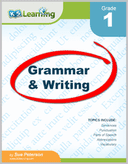
Download & Print Only $5.29
Noun Worksheets
A person, place of thing.
These grammar worksheets help kids learn to recognize and use nouns . A noun is a word for a person, place or thing. Our nouns worksheets also cover plural nouns, common and proper nouns, possessive nouns, collective nouns and abstract nouns.
Grade 1 nouns worksheets
- Identifying simple nouns as a person, place or thing
- Identifying nouns in sentences
- Completing sentences with nouns
- Identifying plural nouns
- Making nouns plural by adding "s" or "es"
- Identifying common and proper nouns
- Making nouns possessive by adding apostrophe plus s
Grade 2 nouns worksheets
- Classifying nouns: person place or thing
- Writing nouns in your own sentences
- Capitalize common and proper nouns appropriately
- Identify singular and plural nouns
- Plural nouns: nouns ending in "y"
- Plural nouns: nouns ending in a vowel plus y
- Irregular plural nouns
- Collective nouns
Grade 3 nouns worksheets
- Classifying nouns as a person, place or thing
- Nouns as direct objects
- Countable and uncountable nouns
- Regular plural nouns
- Irregular nouns
- Concrete and abstract nouns

Sample Nouns Worksheet
What is K5?
K5 Learning offers free worksheets , flashcards and inexpensive workbooks for kids in kindergarten to grade 5. Become a member to access additional content and skip ads.

Our members helped us give away millions of worksheets last year.
We provide free educational materials to parents and teachers in over 100 countries. If you can, please consider purchasing a membership ($24/year) to support our efforts.
Members skip ads and access exclusive features.
Learn about member benefits
This content is available to members only.
Join K5 to save time, skip ads and access more content. Learn More

Want to create or adapt books like this? Learn more about how Pressbooks supports open publishing practices.
Part Three Editing / Grammar Skills
Unit 16 Nouns
Learning Objectives
- To learn different types of nouns: proper nouns, common nouns, count nouns, noncount nouns, singular nouns, and plural nouns
- To identify and understand the above types of nouns in a variety of contexts through multiple examples
- To apply different rules and uses of nouns through a variety of writing situations

Adapted from myplate.gov . Last accessed on April 2, 2021.
II. Types of N ouns
Nouns are names: names of people, names of places, names of things, and names of ideas. There are different ways to classify nouns. A few usual ones are described below.
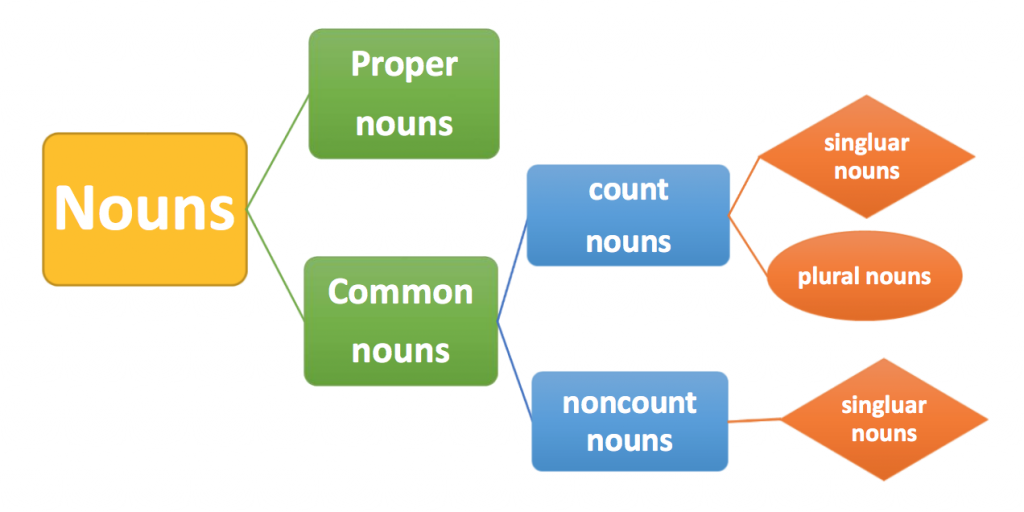
III. Proper Nouns and Common Nouns
|
| Proper nouns are usually specific names of people, places, organizations, and others. The first letters are usually capitalized. | Abraham Lincoln, Albert Einstein, Ann, Vrej… Central America, Australia, Illinois, Chicago, Michigan Avenue, Grand Park… the United Nations, the Department of Agriculture, Harper College, Smoque BBQ, Jewel Osco… |
|---|---|---|
|
| Common nouns are general names. The first letters are usually not capitalized. | president, scientist, friends, professors… restaurants, organization, office, city, colleges, stores… computer, classes, safety… |
Proper nouns ( bold-faced ) and common nouns ( underlined ) are often used in the same sentences.
- Gogi and Smoque BBQ are two of the most famous restaurants in Chicago . (https://guide.michelin.com/en/restaurants)
- Harper College offers Culinary Arts Certificate to students interested in becoming cooks or chef’s assistants .
- There are many grocery stores in my neighborhood such as Jewel Osco and Whole Foods .
- The United States government has published Dietary Guidelines for Americans (DGA), 2020-2025 . This document provides many guidelines for a healthy diet .
Exercise 1. Read each sentence carefully and identity the types of nouns used in each. The first one is an example.
Example :
Two United States government agencies, the Secretaries of Agriculture and Health and Human Services, publish the Dietary Guidelines for Americans every five years.
Proper nouns : United States, Secretaries of Agriculture, Health and Human Services, Dietary Guidelines for Americans
Common nouns : government, agencies, recommendations, years
- The Guidelines provide advice on what to eat more and what to eat less in order to stay healthy.
- The Dietary Guidelines for Americans, 2020-2025 offers recommendations for each life stage, from birth through older adulthood
- There are three key principles: choose mainly from the food with high nutrition, select a variety of choices from each of the five food groups, and pay attention to the portion size.
- It is never too early or too late to improve dietary choices for a healthy lifestyle.
Adapted from “Make Every Bite Count with the Dietary Guidelines for Americans”.
https://www.dietaryguidelines.gov/sites/default/files/2020-12/DGA_2020-2025_Infographic_MakeEveryBiteCount.pdf . Last accessed on September 27, 2021.
IV. Singular Nouns and Plural Nouns
|
| Singular nouns refer to one person, one place, one thing, one idea… | one egg, one meal, one supermarket, one computer, one store, one office… an egg, an office, a meal, a supermarket, a computer, a store… |
|---|---|---|
|
| Plural nouns refer to two or more people, places, things, ideas .. | two eggs, three offices, four meals, five supermarkets, several computers, many stores… |
Singular nouns ( underlined ) and plural nouns ( bold-faced ) are often used in the same sentences.
- One egg contains many nutrients .
- Most people eat three meals a day , with a snack in between.
- There are many stores in my neighborhood . Some sell computers , and some sell groceries .
Most count nouns follow fixed patterns in forming their plural forms, but some are irregular.
|
|
|
|---|---|
|
| apple – apples, cucumber – cucumbers, grape – grapes…
|
|
| glass – glasses, dish – dishes, brush – brushes, church – churches, bus – buses, box – boxes… |
|
quiz – quizzes, ox – oxen | |
|
| day – days, key – keys, boy – boys, toy – toys… |
|
| family – families, lady – ladies, butterfly – butterflies, strawberry – strawberries… |
|
| radio – radios, video – videos, zoo – zoos… |
|
| hero – heroes, potato – potatoes, tomato – tomatoes… |
|
piano – pianos, auto – autos, photo – photos … | |
|
| leaf – leaves, life – lives, knife – knives, shelf – shelves, half – halves, loaf – loaves, wife – wives, wolf – wolves… |
|
chef – chefs, cliff – cliffs, sheriff – sheriffs, roof – roofs, belief – beliefs… | |
|
| man – men, woman – women, child – children, person – people (more common than “persons”), foot – feet, tooth – teeth, goose – geese, mouse – mice, crisis – crises, analysis – analyses… |
|
| sheep – sheep, deer – deer, moose -moose, fish – fish, shrimp – shrimp…
|
|
| glasses, scissors, jeans, pants, pajamas, shorts… |
Exercise 2 . Choose the singular or plural forms of the nouns to finish the following paragraph about the Dietary Guidelines. Type your choices in the boxes. You will receive instant feedback. When you finish the entire exercise you may retry or see all the answers.
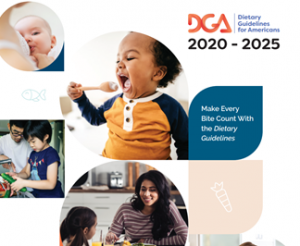
There are many __________ (idea, ideas ) to keep us healthy in the Dietary Guidelines for Americans.
V. Count and Noncount Nouns
|
| When people or things can be counted by 1, 2, 3…, they are usually count nouns. If there are more than one, use the plural form.
| one brother, two sisters … one pound, two cups, three eggs … |
|---|---|---|
|
| Some things cannot be counted or are too small to be counted. They are usually noncount nouns. Noncount nouns are always singular.
| water, coffee, snow, rice, sand, salt … English, math, biology … danger, love, anger …
|
Count nouns ( underlined ) and noncount nouns ( bold-faced ) are often used in the same sentences or groups of sentences.
- My meal often includes rice , some vegetables , and some seafood .
- In our nutrition class , we are discussing the five food groups . We are surprised that a cup of 100% fruit juice is considered a serving of fruit .
- Many people read the Nutrition Facts label when they buy food . The label tells them a lot of useful information .
- Overweight and obesity can cause many diseases .
Exercise 3. There is one error in the use of count or noncount noun in each of the following sentences about the Nutrition Facts labels. Find the error and correct it.
E xample :
There is a lot of advices ( advice ) on leading a healthy life.
- The Nutrition Facts label tells consumers a lot of informations about the food they are buying.
- It lists how many servings there are in the package, how many calories each serving has, and how many gram of nutrients each serving contains.
- In the label for frozen lasagna below, there are four serving in the package, and each serving equals 1 cup, with 280 calories.
- Knowing how many servings we are eating is important. If we have 2 servings of lasagna for dinner, we will eat 2 cup, with 560 calories and 18 grams of fat!
- We should always remember to add vegetables to the dinner plate: tomatoes, peppers, corns, and others.
- Eating healthy seems like a lot of works, but it is worth our time and efforts.

VI. Rules in Using Nouns
1. Do not put “a/an” or a number (one, two…) in front of a noncount noun. Do not add an “s” to the end of it.
- The restaurant has installed three new equipments : a big-screen TV and two deep freezers.
- The restaurant has installed some new equipment : a big-screen TV and two deep freezers.
- The restaurant has installed three pieces of new equipment : a big-screen TV and two deep freezers.
- Each customer will receive a free dessert: a large strawberry dipped in a chocolate .
- Each customer will receive a free dessert: a large strawberry dipped in chocolate .
2. Do not put “a/an” in front of a count noun and add an “s” after it at the same time.
- Many children eat an apples every day.
- Many children eat an apple every day.
- Many children eat apples every day.
3. Singular count nouns usually cannot stand alone. They need some kind of “determiners” in front of them. These “determiners” include articles (a, an, the), numbers (one, two…), possessive adjectives (my, his, your…), or demonstrative adjectives (this, that).
- I eat apple every day.
- I eat an apple every day.
- I eat one apple every day.
- Please join discussion on healthy living next Monday.
- Please join our discussion on healthy living next Monday.
- Please join the discussion on healthy living next Monday.
- Label shows how much fat one serving of lasagna has.
- This label shows how much fat one serving of lasagna has.
4. Use the singular form of the verb with a singular count noun. Use the plural form of the verb with a plural count noun. Use the singular form of the verb with a noncount noun. The pronouns also change accordingly.
- A medium tomato has about twenty-two calories and one gram of protein. It does not contain any cholesterol.
- Fresh tomatoes are on sale in the supermarket near my home. They taste great.
- There are two slices of bread in my lunch box. I will use them to make a sandwich.
- My sandwich is delicious and healthy. It contains two slices of whole wheat bread, two pieces of iceberg lettuce, a slice of low-fat shedder cheese, and a piece of grilled chicken breast.
For more explanations and examples of subject-verb agreement, please refer to Unit 10. Open Unit 10 here.
For more explanations and examples of noun-pronoun agreement, please refer to Unit 19. Open Unit 17 here .
5. In the phrase “one of ________”, use a plural noun, but use the singular form of the verb because the subject is “one”.
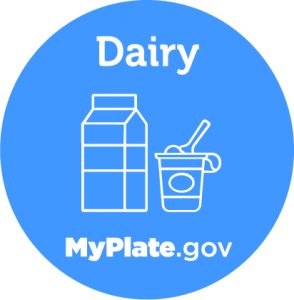
- One of the five food groups contains dairy. For children two to three years old, dairy is especially important.
- One of the nutrients from dairy is calcium. It helps children build stronger bones.
6. Some nouns are used in the singular form even though they imply plural meaning. This is because they act like adjectives. Adjectives in English are always singular.
- Nutrition 101, also called Fundamentals of Nutrition, carries 3 credit hours at Harper College. It is a 3-credit-hour course .
- It is interesting to notice that anyone 9 years or older should take the same amount of dairy: 3 cups a day. This means that 9-year-old boys or girls should not take in more diary than 4 0-year-old men or women .
- It seems that the daily dairy needs are the same for a growing 12-year- old boy and a mature 60-year-old man .
Adapted from https://www.myplate.gov/eat-healthy/dairy . Last accessed on September 27, 2021.
7. Use the singular form of a count noun after “each” and “every”.
- Each glass is filled with juice for children and wine for adults.
- Every gues t is having a fun time.
Exercise 4 . There is one error in the use of noun or its “determiner” in each of the following sentences about healthy eating. Correct the noun or its determiner. Do not change anything else in the sentence.

If we are concerned about our weight, drinking skim milk instead of whole milk might help us lose an extra pounds . (extra pounds or an extra pound)
- Although juice is a convenient source of vitamin, it is low in fiber.
- It is better to have whole orange than a cup of orange juice.
- One of the problem in the modern diet is having too much sodium.
- When we eat cooked bean from a can, we should dump [3] the sauce in the can and rinse the beans with water before eating them. That way, we will take in less sodium.
- A five-courses meal may look delicious, but it almost always has too much fat, cholesterol, and sodium contents.
- A two-years-old child should eat about three ounces of grains every day. A child nine years old should eat about five ounces.
- If the children are nine year old, they should eat about five ounces of grains every day.
- We should not forget to drink a water every day.
- One of the best way for us to stay healthy is to watch what we eat and drink daily.
- At last night’s party, the hosts [4] made sure that every dishes was hot and decorated with garnish [5] made of vegetables.
Some information adapted from https://www.myplate.gov/myplate-plan/results/1000-calories-ages-2-3
and https://www.myplate.gov/your-myplate-plan-1400-calories-ages-9-13 .
Last accessed on September 27, 2021.
VII. Unit Review Practice
Exercise 5 . You may often hear sayings about food. Choose a saying below and free write for five minutes whether or not you agree and why you think so. The authors’ names are included in the parentheses. If you are interested in them, you can search for their information online later.
- Life is uncertain [6] . Eat dessert first. (Ernestine Ulmer)
- The secret of success in life is to eat what you like and let the food fight it out inside. (Mark Twain)
- All happiness depends on a leisurely [7] breakfast. (John Gunther)
- One cannot think well, love well, sleep well, if one has not dined [8] well. (Virginia Woolf, A Room of One’s Own )
- There is no love sincerer than the love of food. (George Bernard Shaw, Man and Superman )
- One must eat to live, not live to eat. (Jean-Baptiste Poquelin)
- Take care of your body. It’s the only place you have to live. (Jim Rohn)
Exercise 6. The following paragraph is about nutrition needs of vegetarians [9] . In the underlined nouns, find twelve more errors (not including the example). Correct the errors. The first one is an example.
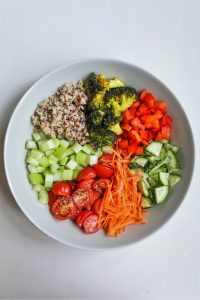
Nutrients for Vegetarians
The American Academy of Nutrition and Dietetics advises vegetarians to meet the daily needs of five important nutrient (nutrients) . They are calcium , iron , protein, Vitamin B12, and Vitamin D. If some vegetarians do not eat dairy product , they should get their calciums from plant-based foods such as tofu and almond milk. Iron is another essential nutrients , and vegetarians should get it from dark, leafy vegetables like spinaches and chard. One of the iron source is fortified breakfast cereals. For example, a cup of multigrain cheerios provides about 75% daily value of iron. Since vegetarians do not eat meat, protein can be taken from beans , nut , and whole grains. For those who do not eat egg or dairy products, a Vitamin B12 supplements is recommended. Fortified cereals are also a convenient and inexpensive sources . The same cup of multigrain cheerios contains about 75% daily value of Vitamin B12. Another essential nutrients is Vitamin D. Not many foods naturally contain Vitamin D, so it is important for vegetarian who do not eat dairy products to get adequate sunlights or take a Vitamin D supplement .
Adapted from https://www.eatright.org/food/nutrition/vegetarian-and-special-diets/food-sources-of-important-nutrients-for-vegetarians . Last accessed on September 28, 2021.
Exercises 7. In the following paragraph about my grandmother and me, there are twelve more errors in the use of nouns (not including the example). Find the errors and correct them. The first one is an example.
With My Grandma in the Kitchen
Learning to cook from my grandmother remains one of the sweetest memories in my life. She taught me how to cook while I was living with her during my high school years. At that time, she was in her 60s and had been preparing meals for the family for decades. One of my favorite dish (dishes) to make was broccoli apple salad. She would get fresh ingredient from a local grocery stores in the morning, and we would make the salad in the afternoon after I came back from school. There was not a lot of homeworks then, so I was able to enjoy my times with my grandma in the kitchen. ( four more errors in this paragraph)
When I got home, she had already laid all the ingredients on the kitchen table: a pound of broccoli, two apple, a small onions… We would wash every apple and every broccoli florets. I even rinsed [10] each walnut piece and every raisins under water as well. The fun part was to make the sauce by mixing mayonnaise, lemon juice, salt, and sugar. ( four errors in this paragraph)
My grandma would add each ingredients a little at a time to make sure all was mixed perfectly. However, I did not have the patiences, and I was usually hungry by then. I would use a huge spoons to shovel sugar and salt into the mix, which usually turned out to be either too sweet or too salty [11] . This often led to a loving scolding from my grandma, but I knew that she loved me and would never get upset with me. Many year have passed, but my memories with my grandma in the kitchen have always been dear to my heart. (four errors in this paragraph)
Exercise 8 . Read the following recipe. There are ten more errors in the use of nouns (not including the example). Find the errors and correct them.
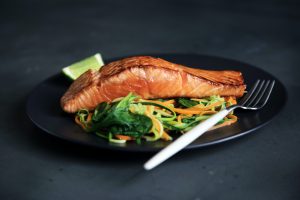
Baked Soy Ginger Salmon
A plate of baked soy ginger salmon is a weekly fixture [12] on my family’s dinner table. It is very easy to make when I follow the following step (steps ) . The first step is to get all the ingredient ready. I need one pounds of salmon fillet and one teaspoon of each: seasoned salt, cooking wines, and vegetable oil. Besides, I prepare two teaspoon of low sodium soy sauce, half a teaspoon of sugars, and half a cup of water. There are two more dry ingredients: some thin slice of ginger roots and green onions for flavor. When everything is ready, sprinkle seasoned salt over the salmon fillet and keep it refrigerated for 30 minute. Mix the remaining ingredients in a bowl. At the same time, preheat the oven to 350 degree Fahrenheit. Line a tray with a piece of aluminum foil. The aluminum foil is essential because I will not need to scrub the stains off the tray later. As soon as the oven reaches the desired temperature, place the marinated fillet in the center of the tray and pour the rest of the ingredients over the fillet. Put the tray in the center rack of the oven and bake for 20 to 25 minutes. Put the baked fillet on a plate, garnish with some colorful vegetable. An easy-to-make dishes is created for my family to enjoy!
Exercise 9 . Click the weblink below to open “Dietary Guidelines for Americans, 2020-2025”. Follow the instructions below.
https://www.dietaryguidelines.gov/sites/default/files/2020-12/Dietary_Guidelines_for_Americans_2020-2025.pdf
- Turn to page i and ii (Table of Contents) to choose a topic you are interested in. Then go to the given page(s) for that topic.
- Read the information there and highlight all the nouns.
- Free write for five minutes what you have learned from the information on the page you have just read. What is the information? Is it new to you? How will it impact your diet?
- Exchange your work to share ideas with your partner.
Exer cise 10 . Look for a recipe in the weblink below. Examine the ingredients and the amount of each ingredient. Then look at the Nutrition information and MyPlate Food Groups below the recipe.
Write a review of this recipe. In what ways do you like or dislike about it? You can submit your review right there on the website.
https://www.myplate.gov/myplate-kitchen/recipes
Exercise 11 . Discuss or write a paragraph for each of the following topics.
- What is your favorite food from your native country? What food group does it belong to? Why is it your favorite? Is it available in stores in the U.S.? Share a picture and a recipe if possible.
- Choose two food items that you eat on a regular basis. Search for their Nutrition Facts labels online (for example, google.com). Discuss the serving size, number of servings, number of calories, grams of fat, etc. Then discuss whether or not these items contribute to a healthy diet.
NSNT Practice

Go to The NSNT Free Writing Approach and Additional Weekly Prompts for Writing in Appendix A. ( Open Appendix A here. ) Choose two topics that you have not written about. You may start with the NSNT approach. Then revise and edit your paragraphs. Pay attention to the use of nouns. You are encouraged to share your writing with your partner and help each other improve.
Vocabulary Review
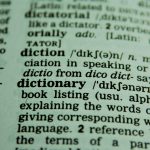
The words here have appeared in this unit. The best way to learn them is to guess the meaning of each word from the context. Then hover your computer mouse over the number beside each word to check its meaning and part of speech. These words are also listed in the footnote area at the end of each unit.
Here, you can use the flashcards below to review these words.
- Nouns are names of people, places, things, ideas, etc. There are different types of nouns.
- Proper nouns are specific names of people, places, and organizations. Common nouns are general names.
- Count nouns are in their singular forms when referring to one and in their plural forms when referring to two or more. Noncount nouns are always singular.
- The following uses about nouns are important:
- Do not put “a/an” or a number (one, two…) in front of a noncount noun. Do not add an “s” to the end of it.
- Do not put “a/an” in front of a count noun and add an “s” after it at the same time.
- Singular count nouns usually cannot stand alone. They need a “determiner” in front of them, such as articles (a, an, the), numbers (one, two…), possessive adjectives (my, his, your…), or demonstrative adjectives (this, that).
- Singular nouns are followed by the singular forms of verbs and pronouns. Plural nouns are followed by the plural forms of verbs and pronouns.
- In the phrase “one of ________”, use a plural noun, but use the singular form of the verb.
- Some nouns like the word “year” in “a ten-year-old boy” are used in the singular form when they are part of an adjective.
- Use the singular form of a count noun after “each” and “every”.
Media Attributions
- U.S. government new food plate icon © U.S. Depart of Agriculture
- types of nouns © Lin Cui is licensed under a CC0 (Creative Commons Zero) license
- cover of Dietary Guidelines for Americans, 2020-2025 © United States Department of Agriculture
- nutrition facts label for frozen lasagna © United States Food and Drug Administration
- MyPlate.gov dairy logo © United States Department of Agriculture is licensed under a Public Domain license
- some oranges and a glass of juice © Photo by aliet kitchen on Unsplash
- a plate of vegetables © Photo by Polina Tankilevitch from Pexels
- a plate of salmon fillet with vegetables © Photo by Caroline Attwood on Unsplash
- a pen writing in a notebook © Photo by Aaron Burden on Unsplash
- a page in a dictionary © Pixabay
- nutrition-dense: adjective, full of nutrients ↵
- beverage: noun, a drink ↵
- dump: verb, drop, empty out ↵
- host: noun, a person who receives and entertains guests in his home ↵
- garnish: noun, food or drink decoration to increase flavor, color, etc. ↵
- uncertain: adjective, unsure ↵
- leisurely: adjective, relaxing ↵
- dine: verb, eat ↵
- vegetarian: noun, a person who eats only vegetables ↵
- rinse: verb, wash lightly by pouring water over something ↵
- salty: adjective, containing too much salt ↵
- fixture: noun, something that is fixed in a place ↵
Building Academic Writing Skills Copyright © 2022 by Cui, Lin is licensed under a Creative Commons Attribution-NonCommercial-ShareAlike 4.0 International License , except where otherwise noted.

Noun Exercises – Noun Worksheet
In this noun worksheet, you will explore the fundamental aspects of noun usage within the English language. Through targeted exercises, you will deepen your understanding of this essential part of speech and develop the skills necessary to craft precise and articulate sentences.
Don’t forget to go through the articles listed below to improve your understanding of Nouns:
- Common Nouns
- Proper Noun
- Abstract Nouns
- Concrete Nouns
- Collective Nouns
Noun Worksheet

Noun Exercises
Noun exercise 1: multiple choice – types of nouns.
1. What type of noun is “car”?
| a) Proper noun b) Common noun | c) Abstract noun d) Collective noun |
2. What type of noun is “Paris”?
3. What type of noun is “happiness”?
4. What type of noun is “team”?
5. What type of noun is “river”?
6. What type of noun is “London”?
7. What type of noun is “freedom”?
8. What type of noun is “orchestra”?
9. What type of noun is “mountain”?
10. What type of noun is “New York”?
11. What type of noun is “intelligence”?
12. What type of noun is “family”?
13. What type of noun is “dog”?
14. What type of noun is “Paris”?
15. What type of noun is “kindness”?
16. What type of noun is “jury”?
17. What type of noun is “book”?
18. What type of noun is “Tokyo”?
19. What type of noun is “honesty”?
20. What type of noun is “flock”?
| 1. b | 2. a | 3. c |
| 4.d | 5. b | 6. a |
| 7. c | 8.d | 9. b |
| 10. a | 11. c | 12.d |
| 13. b | 14. a | 15. c |
| 16.d | 17. b | 18. a |
| 19. c | 20.d |

Noun Exercise 2: Fill in the Blanks with the Correct Form of the Noun
- The ________ (child) are playing in the garden.
- I need to buy some fresh ________ (vegetable) from the market.
- The ________ (student) scored top marks in the exam.
- She loves to listen to classical ________ (music).
- The ________ (bird) are singing in the trees.
- The ________ (doctor) treated the patient with care.
- We saw a beautiful ________ (butterfly) in the garden.
- He collects rare ________ (coin) from different countries.
- The ________ (actor) performed brilliantly on stage.
- I enjoy reading mystery ________ (novel).
- The ________ (dog) wagged its tail happily.
- She bought a pair of stylish ________ (shoe).
- The ________ (child) drew a picture of a house.
- The ________ (piano) produced a beautiful melody.
- We admired the colorful ________ (flower) in the garden.
- The ________ (writer) penned an inspiring story.
- The ________ (chef) prepared a delicious meal.
- The ________ (scientist) conducted an experiment.
- The ________ (friend) offered a helping hand.
- The ________ (baby) slept peacefully in the crib.
| 1. children | 2. vegetables | 3. student |
| 4. music | 5. birds | 6. doctor |
| 7. butterfly | 8. coins | 9. actor |
| 10. novels | 11. dog | 12. shoes |
| 13. child | 14. piano | 15. flowers |
| 16. writer | 17. chef | 18. scientist |
| 19. friend | 20. baby |
Noun Exercise 3: Identify the Nouns
- The dog barked loudly at the mailman.
- My grandmother makes delicious apple pies.
- The children played happily in the park.
- The sunsets in Hawaii are breathtaking.
- The company announced a new product launch.
- The baby giggled at the colorful balloons.
- The old oak tree provided shade in the garden.
- The teacher praised the students for their hard work.
- The cat chased the mouse around the house.
- We went for a walk along the riverbank.
- The nurse took care of the sick patients.
- The police officer arrested the suspect.
- The ocean waves crashed against the shore.
- The artist painted a beautiful landscape.
- The doctor prescribed medicine for the illness.
- The birds sang sweetly in the morning.
- The mechanic fixed the car’s engine.
- The farmer harvested ripe tomatoes from the field.
- The dancer performed an elegant routine.
- The writer penned an intriguing mystery novel.
- dog, mailman
- grandmother, pies
- children, park
- sunsets, Hawaii
- company, product launch
- baby, balloons
- tree, shade, garden
- teacher, students, work
- cat, mouse, house
- walk, riverbank
- nurse, patients
- police officer, suspect
- ocean, waves, shore
- artist, landscape
- doctor, medicine, illness
- birds, morning
- mechanic, car, engine
- farmer, tomatoes, field
- dancer, routine
- writer, novel
Noun Exercise 4: Error Identification with Nouns
- The childs played in the park.
- She has two dogs and three cat.
- The sunsets in the evening are beautiful.
- We saw many deers in the forest.
- The company announced a new product launches.
- The baby giggled at the colorful balloon.
- The teacher praised the student for their hard work.
- I need to buy some fresh vegetable from the market.
- The mouse chased the cats around the house.
- She loves to listen to classical musics.
- The dog barked at the stranger.
- The flower bloomed in the garden.
- The children played happily in the playgrounds.
- The chef prepared a delicious meals for the guests.
- The nurse took care of the patients.
- The bird sing sweetly in the morning.
- The mechanic fixed the cars engine.
- The farmer harvested ripe tomato from the field.
- The dancer performed an elegant routines.
- The writer penned an inspiring storys.
| Error | Correction |
|---|---|
| 1. childs | children |
| 2. cat | cats |
| 3. sunsets | sunsets |
| 4. deers | deer |
| 5. launches | launch |
| 6. balloon | balloons |
| 7. student | students |
| 8. vegetable | vegetables |
| 9. cats | cat |
| 10. musics | music |
| 11. stranger | no error |
| 12. flower | no error |
| 13. playgrounds | playground |
| 14. meals | meal |
| 15. patients | no error |
| 16. bird | birds |
| 17. cars | car’s |
| 18. tomato | tomatoes |
| 19. routines | routine |
| 20. storys | stories |
- Latest Posts
- Active vs. Passive Voice Exercises – Active vs. Passive Voice Worksheet - December 25, 2023
- Phrase Exercises – Phrase Worksheet - December 23, 2023
- Sentence Exercises – Sentence Worksheet - December 23, 2023
Have a language expert improve your writing
Run a free plagiarism check in 10 minutes, generate accurate citations for free.
- Knowledge Base
- Parts of speech
The 8 Parts of Speech | Chart, Definition & Examples
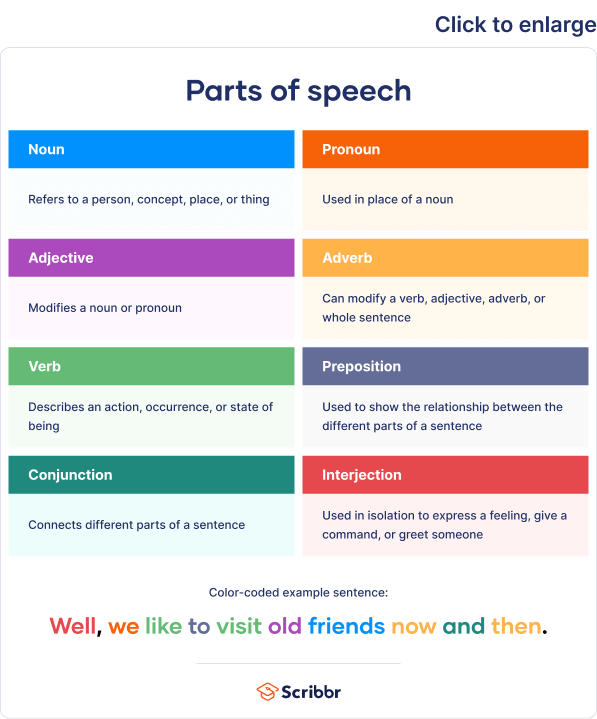
A part of speech (also called a word class ) is a category that describes the role a word plays in a sentence. Understanding the different parts of speech can help you analyze how words function in a sentence and improve your writing.
The parts of speech are classified differently in different grammars, but most traditional grammars list eight parts of speech in English: nouns , pronouns , verbs , adjectives , adverbs , prepositions , conjunctions , and interjections . Some modern grammars add others, such as determiners and articles .
Many words can function as different parts of speech depending on how they are used. For example, “laugh” can be a noun (e.g., “I like your laugh”) or a verb (e.g., “don’t laugh”).
You can check whether you’re using each of the parts of speech correctly using our grammar checker .
Table of contents
- Prepositions
- Conjunctions
- Interjections
Other parts of speech
Interesting language articles, frequently asked questions.
A noun is a word that refers to a person, concept, place, or thing. Nouns can act as the subject of a sentence (i.e., the person or thing performing the action) or as the object of a verb (i.e., the person or thing affected by the action).
There are numerous types of nouns, including common nouns (used to refer to nonspecific people, concepts, places, or things), proper nouns (used to refer to specific people, concepts, places, or things), and collective nouns (used to refer to a group of people or things).
Ella lives in France .
Other types of nouns include countable and uncountable nouns , concrete nouns , abstract nouns , and gerunds .
Check for common mistakes
Use the best grammar checker available to check for common mistakes in your text.
Fix mistakes for free
A pronoun is a word used in place of a noun. Pronouns typically refer back to an antecedent (a previously mentioned noun) and must demonstrate correct pronoun-antecedent agreement . Like nouns, pronouns can refer to people, places, concepts, and things.
There are numerous types of pronouns, including personal pronouns (used in place of the proper name of a person), demonstrative pronouns (used to refer to specific things and indicate their relative position), and interrogative pronouns (used to introduce questions about things, people, and ownership).
That is a horrible painting!
A verb is a word that describes an action (e.g., “jump”), occurrence (e.g., “become”), or state of being (e.g., “exist”). Verbs indicate what the subject of a sentence is doing. Every complete sentence must contain at least one verb.
Verbs can change form depending on subject (e.g., first person singular), tense (e.g., simple past), mood (e.g., interrogative), and voice (e.g., passive voice ).
Regular verbs are verbs whose simple past and past participle are formed by adding“-ed” to the end of the word (or “-d” if the word already ends in “e”). Irregular verbs are verbs whose simple past and past participles are formed in some other way.
“I’ve already checked twice.”
“I heard that you used to sing .”
Other types of verbs include auxiliary verbs , linking verbs , modal verbs , and phrasal verbs .
An adjective is a word that describes a noun or pronoun. Adjectives can be attributive , appearing before a noun (e.g., “a red hat”), or predicative , appearing after a noun with the use of a linking verb like “to be” (e.g., “the hat is red ”).
Adjectives can also have a comparative function. Comparative adjectives compare two or more things. Superlative adjectives describe something as having the most or least of a specific characteristic.
Other types of adjectives include coordinate adjectives , participial adjectives , and denominal adjectives .
An adverb is a word that can modify a verb, adjective, adverb, or sentence. Adverbs are often formed by adding “-ly” to the end of an adjective (e.g., “slow” becomes “slowly”), although not all adverbs have this ending, and not all words with this ending are adverbs.
There are numerous types of adverbs, including adverbs of manner (used to describe how something occurs), adverbs of degree (used to indicate extent or degree), and adverbs of place (used to describe the location of an action or event).
Talia writes quite quickly.
Other types of adverbs include adverbs of frequency , adverbs of purpose , focusing adverbs , and adverbial phrases .
A preposition is a word (e.g., “at”) or phrase (e.g., “on top of”) used to show the relationship between the different parts of a sentence. Prepositions can be used to indicate aspects such as time , place , and direction .
I left the cup on the kitchen counter.
A conjunction is a word used to connect different parts of a sentence (e.g., words, phrases, or clauses).
The main types of conjunctions are coordinating conjunctions (used to connect items that are grammatically equal), subordinating conjunctions (used to introduce a dependent clause), and correlative conjunctions (used in pairs to join grammatically equal parts of a sentence).
You can choose what movie we watch because I chose the last time.
An interjection is a word or phrase used to express a feeling, give a command, or greet someone. Interjections are a grammatically independent part of speech, so they can often be excluded from a sentence without affecting the meaning.
Types of interjections include volitive interjections (used to make a demand or request), emotive interjections (used to express a feeling or reaction), cognitive interjections (used to indicate thoughts), and greetings and parting words (used at the beginning and end of a conversation).
Ouch ! I hurt my arm.
I’m, um , not sure.
The traditional classification of English words into eight parts of speech is by no means the only one or the objective truth. Grammarians have often divided them into more or fewer classes. Other commonly mentioned parts of speech include determiners and articles.
- Determiners
A determiner is a word that describes a noun by indicating quantity, possession, or relative position.
Common types of determiners include demonstrative determiners (used to indicate the relative position of a noun), possessive determiners (used to describe ownership), and quantifiers (used to indicate the quantity of a noun).
My brother is selling his old car.
Other types of determiners include distributive determiners , determiners of difference , and numbers .
An article is a word that modifies a noun by indicating whether it is specific or general.
- The definite article the is used to refer to a specific version of a noun. The can be used with all countable and uncountable nouns (e.g., “the door,” “the energy,” “the mountains”).
- The indefinite articles a and an refer to general or unspecific nouns. The indefinite articles can only be used with singular countable nouns (e.g., “a poster,” “an engine”).
There’s a concert this weekend.
If you want to know more about nouns , pronouns , verbs , and other parts of speech, make sure to check out some of our language articles with explanations and examples.
Nouns & pronouns
- Common nouns
- Proper nouns
- Collective nouns
- Personal pronouns
- Uncountable and countable nouns
- Verb tenses
- Phrasal verbs
- Types of verbs
- Active vs passive voice
- Subject-verb agreement
A is an indefinite article (along with an ). While articles can be classed as their own part of speech, they’re also considered a type of determiner .
The indefinite articles are used to introduce nonspecific countable nouns (e.g., “a dog,” “an island”).
In is primarily classed as a preposition, but it can be classed as various other parts of speech, depending on how it is used:
- Preposition (e.g., “ in the field”)
- Noun (e.g., “I have an in with that company”)
- Adjective (e.g., “Tim is part of the in crowd”)
- Adverb (e.g., “Will you be in this evening?”)
As a part of speech, and is classed as a conjunction . Specifically, it’s a coordinating conjunction .
And can be used to connect grammatically equal parts of a sentence, such as two nouns (e.g., “a cup and plate”), or two adjectives (e.g., “strong and smart”). And can also be used to connect phrases and clauses.
Is this article helpful?
Other students also liked, what is a collective noun | examples & definition.
- What Is an Adjective? | Definition, Types & Examples
- Using Conjunctions | Definition, Rules & Examples
More interesting articles
- Definite and Indefinite Articles | When to Use "The", "A" or "An"
- Ending a Sentence with a Preposition | Examples & Tips
- What Are Prepositions? | List, Examples & How to Use
- What Is a Determiner? | Definition, Types & Examples
- What Is an Adverb? Definition, Types & Examples
- What Is an Interjection? | Examples, Definition & Types
"I thought AI Proofreading was useless but.."
I've been using Scribbr for years now and I know it's a service that won't disappoint. It does a good job spotting mistakes”

Teaching Nouns: Noun Lessons To Get Students Moving
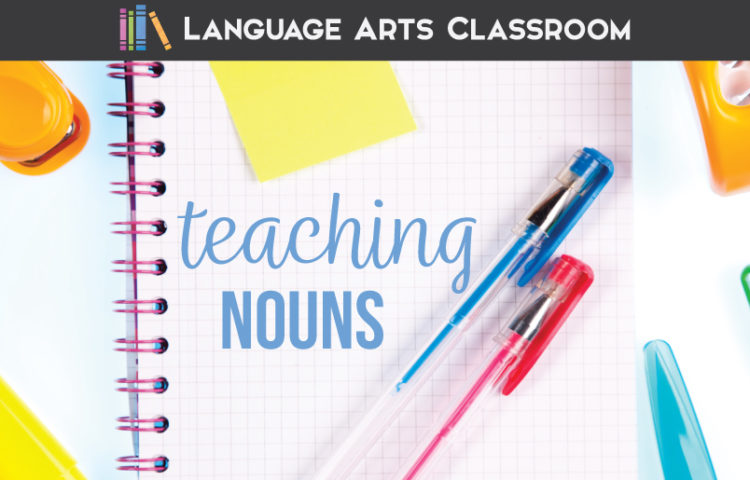
Teaching nouns? Here are noun lessons you can personalize. I’ve even included how to teach nouns online!
A noun lesson is typically the first grammar assignment of the school year. Establishing a foundation with grammar is great! With older students, I don’t spend many days on noun activities. We define nouns, recognize them, and talk about them, but! They key is never to stop a lesson on nouns. Use that domain-specific vocabulary throughout the school year.
What are some effective strategies for teaching nouns to students?
Some effective strategies for teaching nouns to students include using interactive games and activities, such as noun scavenger hunts or noun sorting exercises. Additionally, incorporating visual aids and real-life examples can help students understand and identify nouns more easily.
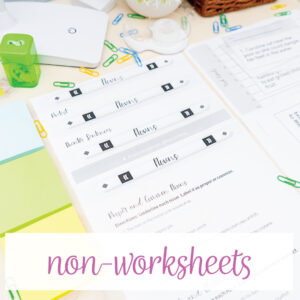
Can we teach grammar without a worksheet?
Yes! Activities should show students that grammar is an important skill with a variety of fun activities.
With noun lessons with older students, I spend time explaining the reasons to learn nouns. Why are we learning nouns? Dependent upon the age you teach, students need to be aware of nouns so that they can:
- identify subjects (and other “noun jobs”). They then can apply knowledge to dictionary use.
- understand possessive words.
- work with noun clauses.
- create parallel structure.
A longer explanation is that nouns can become adjectives and understanding proper and common nouns helps with capitalization (Italian bread). Using apostrophes and making words plural both require an understanding of nouns. As students create more complex sentences, they will create noun clauses (a language standard for high school students). Basically, teaching nouns never ends; ELA teachers only change the type of nouns we teach.
We teachers understand the purpose of nouns! When I plan noun lessons, I am sure to incorporate a discussion about the purpose of nouns.
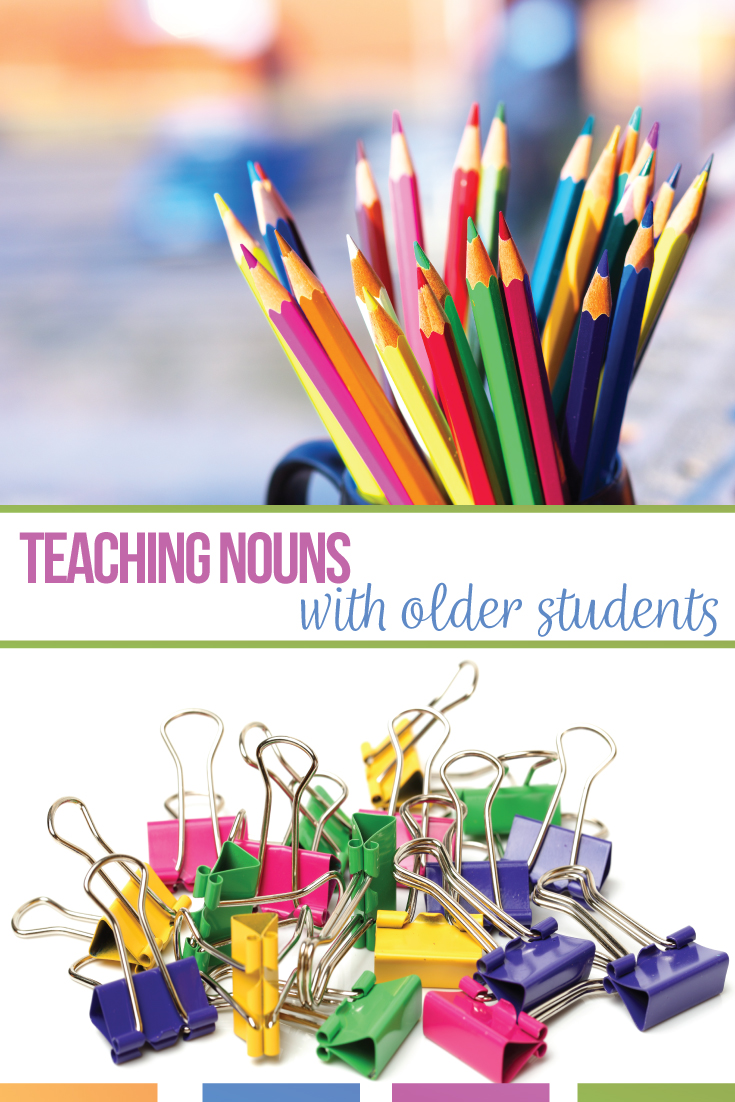
What about pronouns, verbs, and adjectives?
Elementary school lessons do a great job covering all the parts of speech. Still, older students might need a review of different types of nouns, plural nouns, and more before moving to more difficult topics.
Additionally, older students benefit from understanding nouns because their vocabulary increasingly becomes more difficult. Knowing how words work and change can be daunting, so grasping a word’s function helps with vocabulary lessons. With middle school grammar lessons, I teach nouns with direct instruction. With high school grammar lessons, I most often teach nouns with more complex concepts like commas or clauses.
For instance, nouns and noun clauses must also be parallel. With sentence structure studies, parallel elements are increasingly important. Student writing becomes muddled when clauses and phrases are not parallel. Basically, I know older students have studied nouns, and I share that fact with students.
Teenagers always ask why they are learning something, especially before we dive into nouns activities. When they question noun lessons, I provide them with these explanations.
When I prepare noun lessons, I follow a general format. My goal with any grammar lesson is to make the content apply to students. When I teach nouns, I work to include fun noun activities and to connect concepts to students’ writing. My specific process for how to teach nouns changes yearly, but noun activities normally include:
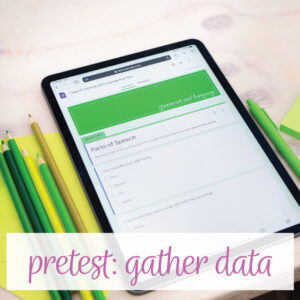
Give a pretest.
Whenever I teach a new grammar concept, I give a pretest! If you’ve followed my blog at all, you know I believe in the power of data. When my students understand a concept, I don’t want to bore them with repeated direct instruction.
I don’t thoroughly teach the specifics of nouns every year (common, proper). Sometimes, my students understand nouns and have very few problems manipulating them. After the pretest , I judge if I need to include specific activities to teach nouns. When I don’t, we discuss nouns and might complete a few of the activities below quickly (five minutes). Sometimes I let students choose how they study. Finally, we sometimes have a discussion about nouns. I include the details of “why” we learn nouns.
As an important note: sometimes, students have poor experiences with grammar lessons. Since a noun lesson is normally my first grammar activity with a new class, I don’t bore them—my noun activities are hands-on and engaging. When students understand that you are establishing the foundation for their future writing, they are more likely to engage.
After I see the data, I might complete one noun lesson and move to the next concept. However, if teaching nouns is necessary, here are noun activities for older students.
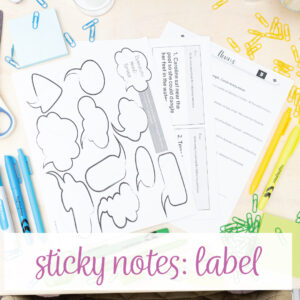
Try an interactive activity.
Fun noun activities exist, even with older students! A simple interactive activity involves sticky notes. I meet students at the door and I hand them a sticky note. Sometimes I hand them more than one sticky note, dependent on how big the class is. I ask them to write a noun that they see in the classroom and adhere the note to that noun.
You can be specific with it, or you can be very general with it: write two proper nouns, two common nouns, four nouns. It’s however you need to scaffold it for your class.
Everybody has the right number of sticky notes, they write their nouns, and then they stick them everywhere! My classroom is covered in nouns, and we love it. I end up with lots of Mrs. Moss sticky notes all over me; they like to label me because I’m a noun. Students come up with some creative nouns: the floor, the door, a random piece of chalk, a thumbtack. My room is just covered in sticky notes, and it’s really a good reminder to emphasize: they do indeed understand nouns.
I leave those sticky notes because we do something similar with different colored sticky notes with adjectives. (Students can describe the nouns.) You can also add the notes to anchor chart or infographic .
As we review the sticky notes, I generally mention collective nouns, proper nouns, common nouns, concrete nouns, and abstract nouns. Older students have heard that domain-specific vocabulary and only need a quick reminder.
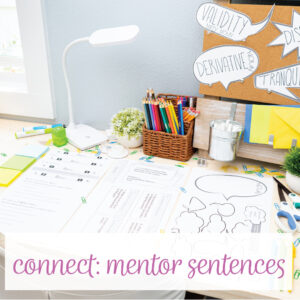
Use a fun mentor text.
Bring in mentor sentences with a picture book . My favorite one to use for nouns is I Love You, Stinky Face . Older students normally get a kick out of it. (If you haven’t read I Love You, Stinky Face , it’s a Scholastic book, and a lot of times you can get it on Scholastic pretty inexpensively or borrow it from libraries.) Some key lines I highlight:
“Mama said, ‘I love you my wonderful child, but I had a question.” Right away, we have concrete and abstract nouns.
“‘Mama, what if I were a big scary ape? Would you still love me then?’” I take the opportunity not only to point out nouns, but also to mention the verb mood. Doing so helps me identify if students understand more complex portions of verbs.
“‘If you were a big scary ape, I would make your birthday cake out of bananas, and I would tell you, ‘I love you, my big scary ape.” With birthday cake , we have a compound noun. Using this picture books triggers those discussions in just a low stress, non-confrontational way.
Students find this story amusing, but most picture books will precipitate discussions about nouns. Mentor texts are a great way to show show students these words are everywhere.
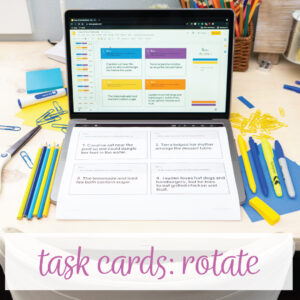
Use task cards/stations.
Since teaching nouns is typically done at the start of the year, I take this opportunity to establish rules and procedures. When students work with task cards (normally with stations), students rotate around the room, and they each have their own sheet to complete for me. With digital or print task cards , I can organize some student to their iPads and others to stations for a whole group rotation.
Working in stations allows me to circulate the room, build relationships, and clarify misconceptions. I also have insight into our next lessons based on understanding. If I need to expand my lesson on nouns, I normally see that during stations. Simply talking amongst students clues me in to where I should review.
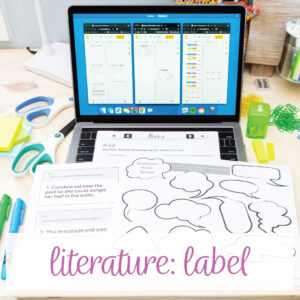
Connect nouns to literature.
Grammar can’t just be this thing we do for ten minutes a day! Mention and work with the concepts, terms, and ideas by carrying discussions into the rest of your class. You can carry your noun lesson to other parts of class. Here’s an example:
Review literature by using the domain specific vocabulary “nouns.” I will put on butcher paper or on big poster boards key pieces to review from a story. If I’m doing “The Most Dangerous Game,” I’ll do proper nouns. I’ll label Zaroff, Rainsford, Ship Trap Island. Students will travel to noun stations, and they will review what each character did that way. You could make common nouns like jaguar or the bedroom and talk about what happens at different stations throughout. Another fun story is “ The Monkey’s Paw .” The wishes are nouns, and readers can each wish a slide of a Google presentation to review what happened with each one.
Reviewing literature is a quick way to emphasize nouns. If you want to connect grammar to other ideas, you can quickly add nouns to short stories.
So often, older students hear grammar lessons and immediately believe something is wrong with their writing. Grammar and understanding language is much more than correcting sentences. Part of my job is to show students that I want to teach them about their language and to share domain-specific vocabulary with them. After teaching nouns, I have established the tone I want for grammar lessons, and I can easily move into pronoun and adjective lessons.
Teaching nouns is normally a pretty fun, quick unit. Like I mentioned, my noun lesson plan changes every year. I use the data from the pretest to start my noun activities, and then I continually assess where students are in their understanding. That grammar unit has an editable noun lesson plan along with noun activities.
Subscribe to our mailing list to receive updates about new blog posts, freebies, and teaching resources!
Marketing Permissions We will send you emails, but we will never sell your address.
You can change your mind at any time by clicking the unsubscribe link in the footer of any email you receive from us, or by contacting us at [email protected] . We will treat your information with respect. For more information about our privacy practices please visit our website. By clicking below, you agree that we may process your information in accordance with these terms.
We use Mailchimp as our marketing platform. By clicking below to subscribe, you acknowledge that your information will be transferred to Mailchimp for processing. Learn more about Mailchimp’s privacy practices here.
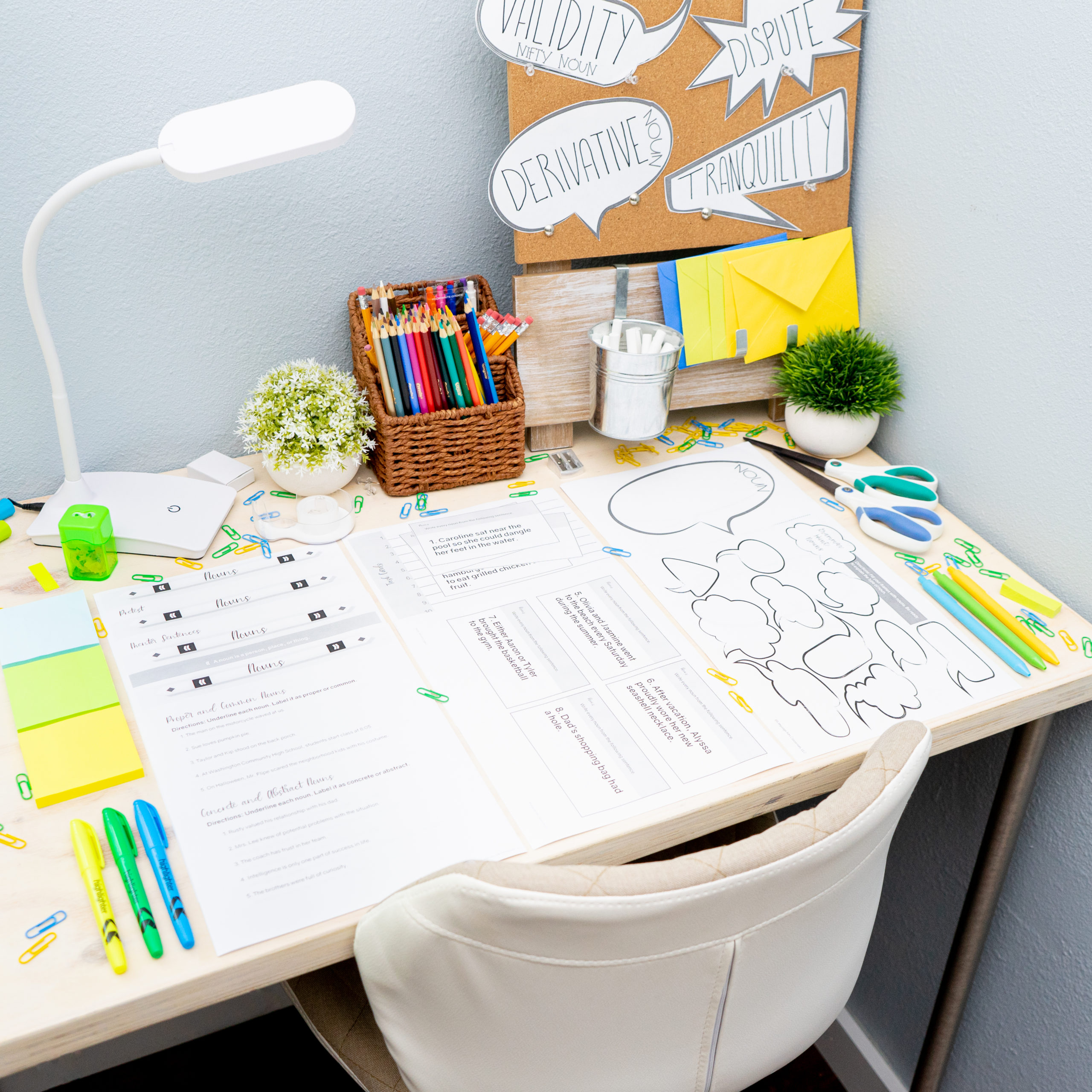
Eight Parts of Speech Teaching Tips
If you’re teaching nouns, you probably more of the parts of speech . Luckily, I have a post for each part:
Pronoun Worksheets and Alternatives for Teaching Pronouns
Verb Activities That Don’t Bore Students
Adjective Lesson Plans: More Than a Grammar Worksheet
Adverb Lesson Plans: More than Adverb Worksheets
Preposition Lesson Plans
Teaching Conjunctions in Diverse Ways
grammar activities grammar lessons parts of speech

IMAGES
VIDEO
COMMENTS
Your students will love this lighthearted noun worksheet. In the first part, students read fifteen superhero themed sentences and circle each noun. Then students analyze five example nouns and determine their types: singular or plural, common or proper, and concrete or abstract.
These grammar worksheets help kids learn to recognize and use nouns. A noun is a word for a person, place or thing. Our nouns worksheets also cover plural nouns, common and proper nouns, possessive nouns, collective nouns and abstract nouns.
To learn different types of nouns: proper nouns, common nouns, count nouns, noncount nouns, singular nouns, and plural nouns; To identify and understand the above types of nouns in a variety of contexts through multiple examples; To apply different rules and uses of nouns through a variety of writing situations
A noun is a word that names something, such as a person, place, thing, or idea. In a sentence, nouns can play the role of subject, direct object, indirect object, subject complement, object complement, appositive, or modifier. Some noun examples include: cat. bicycle.
In this noun worksheet, you will explore the fundamental aspects of noun usage within the English language. Through targeted exercises, you will deepen your understanding of this essential part of speech and develop the skills necessary to craft precise and articulate sentences.
Nouns. A noun is a word that refers to a person, concept, place, or thing. Nouns can act as the subject of a sentence (i.e., the person or thing performing the action) or as the object of a verb (i.e., the person or thing affected by the action).
This guided writing assignment will help your students review the verb SER as well as practice ADJECTIVE/NOUN AGREEMENT. Students will choose 3 people (celebrities, fictional characters from a book or movie, or real people in their lives) to describe.
For several assignments throughout the course, you’ll practice writing noun clauses, first as individual sentences and then within a paragraph. By the end of this course, you’ll be able to see exactly how much your writing has improved when you compare Week 1’s with Week 4’s writing.
Some effective strategies for teaching nouns to students include using interactive games and activities, such as noun scavenger hunts or noun sorting exercises. Additionally, incorporating visual aids and real-life examples can help students understand and identify nouns more easily.
Created by. Katy's Resource Room. The INSTAGrammar series is the perfect way to engage your students while practicing basic grammar concepts such as common vs. proper nouns! This is a Google Slides lesson & activity, combining mini lessons with student application slides. 12 slides total.